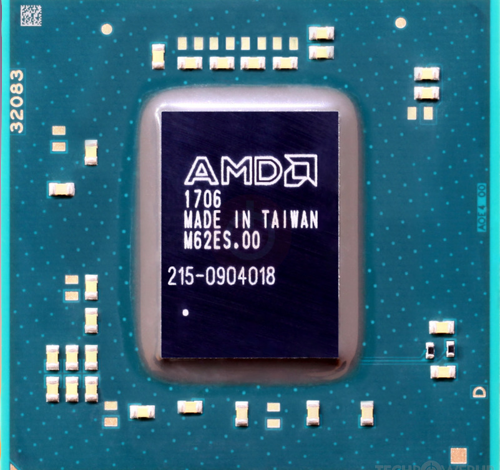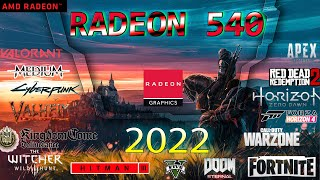Full Review of the AMD Radeon 540 Mobile

In this AMD Radeon 540 Mobile review, we’ll look at the features and specifications of this mobile graphics card. You’ll learn about its display and design, the performance it can deliver, and how it compares to its rivals. You’ll also learn about the different types of RAM that it supports.
Introduction
The AMD Radeon 540 Mobile is a graphics card that runs on the GDDR5 memory standard. It operates at a base frequency of 1124 MHz and can be boosted to 1219 MHz. The memory operates at 1500 MHz and can handle up to 6 Gbps of adequate bandwidth. The Radeon 540 Mobile supports Windows 7 and 10 operating systems. It is also compatible with Linux x86_64. It has already been launched and is available for purchase.
The AMD Radeon 540 Mobile features GCN 4.0 architecture and a 14 nm manufacturing process. Its 2 GB of GDDR5 memory is capable of supporting high-end games. Its memory interface is also 64-bit, with a memory bandwidth of 48 GB/s. The card attaches to the PC via a PCIe 3.0 x8 interface and has a power consumption of 50 watts. Benchmark results have yet to be released, so it’s impossible to know how well it will perform.
The Radeon RX 540 features 512 shaders and eight compute units. This means the 540 is more efficient than its predecessor, the RX 550. It also has a higher memory clock speed of 1219 MHz. In addition, the card supports up to 4GB of GDDR5 memory. Its memory bandwidth is significantly higher than the RX 550, and it will likely draw less power than its predecessor.
Overview Of AMD Radeon 540 Mobile

The AMD Radeon 540 Mobile is a high-end mobile graphics card. It’s built on a 14 nm process and based on AMD’s Lexa graphics processor. It supports DirectX 12 and features a 103 mm2 die area and 2,200 million transistors. The chip has 512 shading units, 32 texture mapping units, and 16 ROPs.
The AMD Radeon 540 Mobile has two GB of GDDR5 memory. It comes with a 64-bit memory interface and 48 GB/s bandwidth; It also uses a PCIe 3.0 x8 interface. The card is capable of 50W of power. However, benchmark results have yet to be available, so judging its performance is difficult.
The Radeon 540’s clock speed is low, but it’s still plenty fast enough for most games. It will support up to 4GB of GDDR5 memory and deliver up to 96GB/s of bandwidth. It will also have up to eight compute units and 512 stream processors. It will be more energy-efficient as a mobile graphics card than the RX 550. However, it’s important to note that the card may come with only some of the features you’ll need for your needs. For example, most graphics cards will have DisplayPort or HDMI ports, while some may require DVI. To help determine how much power the card will consume, you can check the TDP of the graphics card and make sure you have the proper power supply for the card.
Display and Design
The Radeon 540 Mobile is a dual-slot graphics card with a maximum power draw of 50 W. The mobile card does not feature a display connector but uses a standard PCI-Express 3.0 x8 interface to connect to the host system. This video card has several performance parameters, including its shader count, bus speed, and calculation speed. A quick test of the Radeon 540 Mobile’s performance can be done by running a benchmark or gaming test.
The Radeon 540 Mobile features an AMD GCN 4.0 architecture. It was manufactured using a 14 nm process and supported DirectX 12. The Radeon 540 Mobile has 2 GB of GDDR5 memory, and a 64-bit memory interface with a bandwidth of 48 GB/s. The chip requires around 50 watts of power to run and is compatible with Windows and Mac OS X.
Specifications & Features Of AMD Radeon 540 Mobile
The AMD Radeon 540 Mobile is a GCN 4.0 architecture notebook graphics card with two GB of GDDR5 memory. It operates at a frequency of 1124 MHz and can be overclocked to 1219 MHz; the memory operates at a maximum frequency of 1500 MHz and is 6 Gbps effective. The power consumption of this graphics card is 50 watts. As of this writing, the Radeon 540 Mobile has not been benchmarked.
Among the Radeon 540 Mobile’s performance parameters, the GPU base clock, shader count, and manufacturing process helps evaluate the card’s performance. It can also be assessed by looking at gaming test results and benchmarks. Moreover, the Radeon 540 Mobile’s compatibility with other computer components is another essential factor. The card’s connectors must be compatible with the notebook’s motherboard.
AMD Radeon 540 Mobile graphics chip is built using 14-nm process technology and comes with 2GB of memory. It is also equipped with an acceleration option. The graphics card uses a 14-nanometer process and is compatible with DirectX 12.
Pros and Cons
The AMD Radeon 540 Mobile is an integrated graphics chip that supports DirectX 12 and uses a 14-nanometer process. It has a die area of 103 mm2 and contains 2,200 million transistors. It has 640 shaders, 512 shading units, 32 TMUs and 16 ROPs. It is not designed for high-end gaming but is an excellent choice for portable use.
The AMD Radeon 540 mobile is a mid-range graphics card based on AMD’s Polaris 12 chip. It is manufactured using an improved 14-nanometer FinFET process. It should fall between the Radeon Pro 450 and 455 in the MacBook Pro 2016 range.
Conclusion
This review will take a closer look at the AMD Radeon 540 Mobile. It has some unique advantages over its desktop counterparts as a mobile graphics card. First, unlike desktops, they can be placed in a notebook. In addition, it has a higher resolution than the competition. Second, it’s more affordable. But you have to be wary of its sluggish performance.
The AMD Radeon 540 Mobile is a mobile graphics chip built on a 14-nanometer process. It’s based on AMD’s Lexa graphics processor and supports DirectX 12. It has a die area of 103 mm2 and 2200 million transistors; It features 512 shaders and 32 texture mapping units. It consumes 50W of power. Benchmark results have yet to be available for the AMD Radeon 540 Mobile.
While the RX 540 isn’t a performance monster, it is a solid option if you’re looking for affordable graphics power. Its theoretical performance is comparable to the Nvidia GeForce 940MX, but AMD’s chip has lower clock rates. Regarding peak performance, Nvidia’s chip delivers 861.7 GFLOPS and 27 Gtexels/s, whereas the AMD RX 540 Mobile boasts a 9 Gpixels/s peak pixel fill rate.
https://www.amd.com/en/products/graphics/radeon-540
Read Also: Detailed Review Of The Dell Inspiron 15 5585 Laptop




